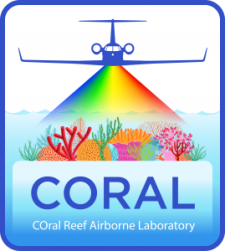It is estimated that 33-50% of coral reefs worldwide have been largely or completely degraded (International Society for Reef Studies Consensus Statement, October 2015). Yet the data supporting these predictions are surprisingly sparse, and thereby their relation to the environment is unclear. The COral Reef Airborne Laboratory (CORAL) will pave the way to better predict the future of this global ecosystem and steward them through global change by addressing the question: What is the relationship between coral reef condition and biogeophysical forcing parameters?
CORAL covers the Mariana Islands, Palau, portions of the Great Barrier Reef, and the Main Hawaiian Islands. These regions cover wide ranges of reef type, physical forcing, human threats, and biodiversity.
CORAL will provide the most extensive and uniform picture to date of coral reef condition through the use of the Portable Remote Imaging Spectrometer (PRISM) instrument aboard the Tempus Applied Solutions Gulfstream-IV (G-IV) aircraft. PRISM will record the spectra of light reflected upward toward the instrument from the ocean below. Its very high spectral resolution is then used to identify reef composition (i.e., coral, algae, and sand) and model primary production. In situ data are obtained to validate the remote observations.

